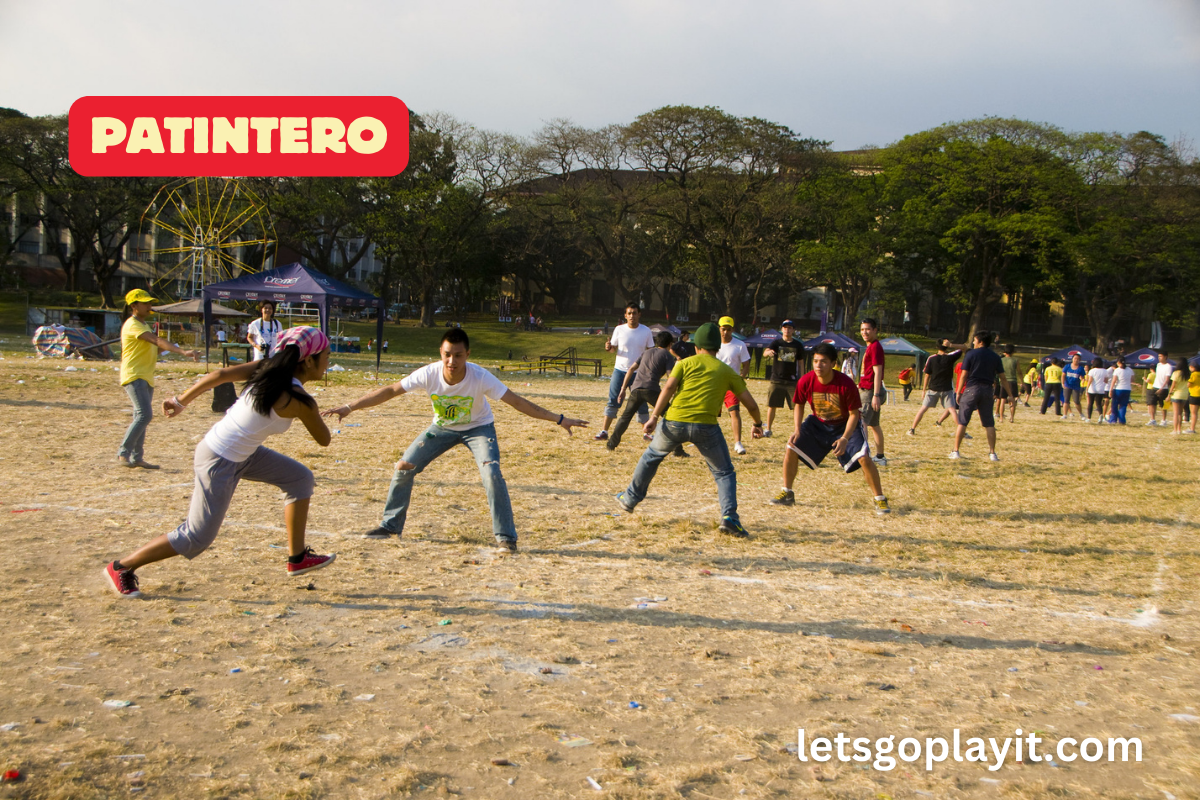Welcome to the vibrant world of “Patintero,” a game that’s not just a pastime but a cultural gem from the Philippines!
As a child of the ’90s, I fondly recall the laughter and excitement that filled our streets when we played Patintero. This article is a nostalgic journey and a guide to rediscovering the joy of this traditional game.
Possible Origin of “Patintero”
The roots of Patintero, also known as harangang-taga or tubigan, are as colorful as the Filipino culture itself. While its exact origin is shrouded in history, it’s believed to have been passed down through generations.
This game reflects the simplicity and creativity of Filipino children, turning basic rules and a stretch of ground into an arena of fun and strategy.
How to Play “Patintero”?
Patintero, a classic Filipino game, is a delightful blend of strategy, speed, and fun. It’s played on a rectangular grid, typically around 6 meters long and 4 meters wide, though these dimensions can vary based on available space. Here’s how you set up and play this exciting game:
Setting Up the Game:
- Marking the Field: First, create the playing field by drawing a rectangular grid on the ground. This grid is divided into several horizontal lines, usually five, spaced evenly apart.
- Forming Teams: Divide players into two teams – the ‘Runners’ and the ‘Blockers’. Each team should ideally have an equal number of players, typically five per side.
Gameplay Rules:
- Starting the Game: The game begins with a coin toss to decide which team will be the Runners first.
- Roles of Players: The Blockers stand on the horizontal lines, each guarding their line. The Runners’ goal is to cross these lines back and forth without being tagged.
- Movement Rules: Blockers can only move along their line and are not allowed to step off it. Runners can move in any direction but must avoid being tagged.
- Scoring: A Runner scores a point each time they successfully cross a line and return without being tagged. If a Runner is tagged, their turn ends, and no point is scored for that attempt.
- Switching Roles: After a set number of rounds or time, the teams switch roles, allowing each team to experience both running and blocking.
Strategies and Tips:
- Teamwork: Runners need to work together, using feints and quick movements to distract and evade the Blockers.
- Blockers’ Strategy: Blockers must coordinate to cover their lines effectively, anticipating the Runners’ moves.
- Stamina and Speed: This game requires quick reflexes and endurance, as Runners need to be fast, and Blockers need to be vigilant.
Ending the Game:
The game ends when each team has had an equal number of turns as Runners and Blockers. The team with the most points at the end of the game is declared the winner.
Preparations Before Playing “Patintero”
Setting up Patintero is part of the fun! All you need is a flat ground and a way to mark lines – traditionally, we used water or chalk. Teams are formed, usually with five players each. The spirit of teamwork begins right from the preparation, as players discuss strategies and roles.
Possible Variation or Challenge in Playing “Patintero”
To spice up the game, variations are often introduced. One popular twist is the ‘time challenge’, where runners have a set time to score as many points as possible. Another variation involves adding more lines or ‘zones’, increasing the difficulty for the runners. These twists not only make the game more challenging but also more engaging.
Age Range of Those Who Can Play “Patintero”
Patintero is a game for all ages, but it’s especially popular among children aged 7 to 14. It’s a fantastic way for kids to develop physical agility and social skills. However, don’t let age limit you! Even adults can join in, reliving childhood memories and enjoying a fun workout.
Gameplay Duration of “Patintero”
A typical game of Patintero can last anywhere from 15 minutes to an hour, depending on the agreed rules. The flexible nature of the game allows players to adjust the duration to fit their schedule, making it perfect for quick fun or an extended playtime.
Similar Games of “Patintero” with Other Countries
Patintero shares similarities with games worldwide. It’s akin to ‘Red Rover’ in the West and ‘Kho Kho’ in India. These games, though varied in rules and names, embody the universal joy of chase and tag, transcending cultural boundaries.
Other FAQs about “Patintero”
Q: Is Patintero suitable for indoor play? A: Ideally, it’s an outdoor game, but it can be adapted for large indoor spaces.
Q: Can the number of players vary? A: Absolutely! While five per team is standard, the game is adaptable to the number of participants.
Q: Is special equipment needed? A: No, just a space to play and a way to mark lines.
Note: Featured image is credited to Yabang Pinoy of flicker.com




